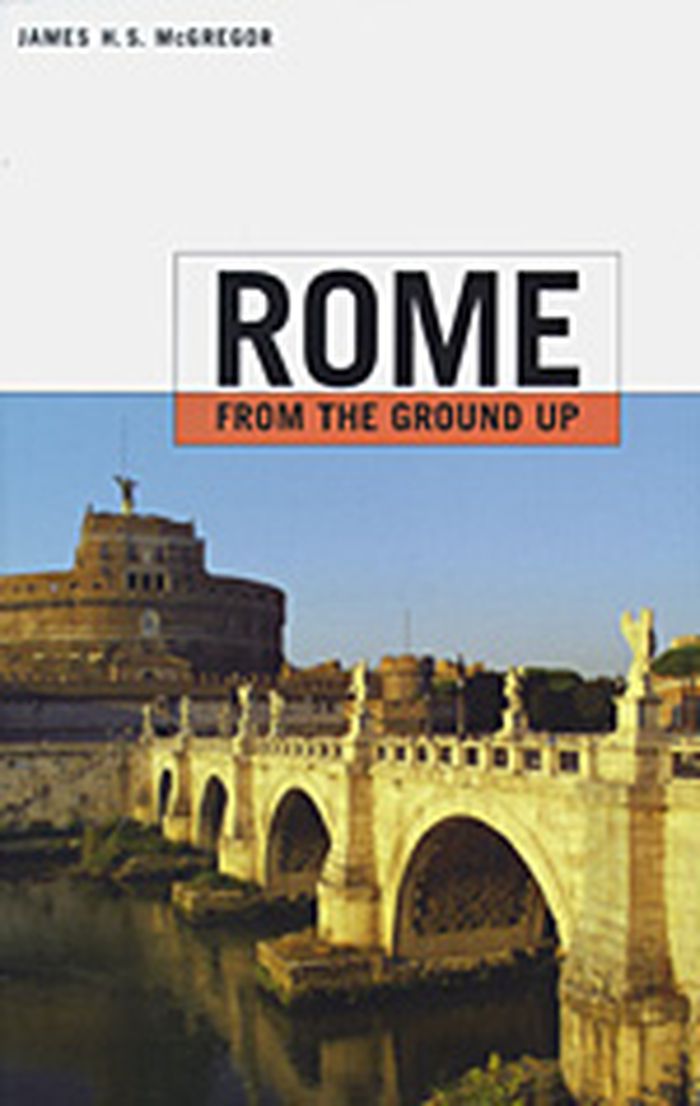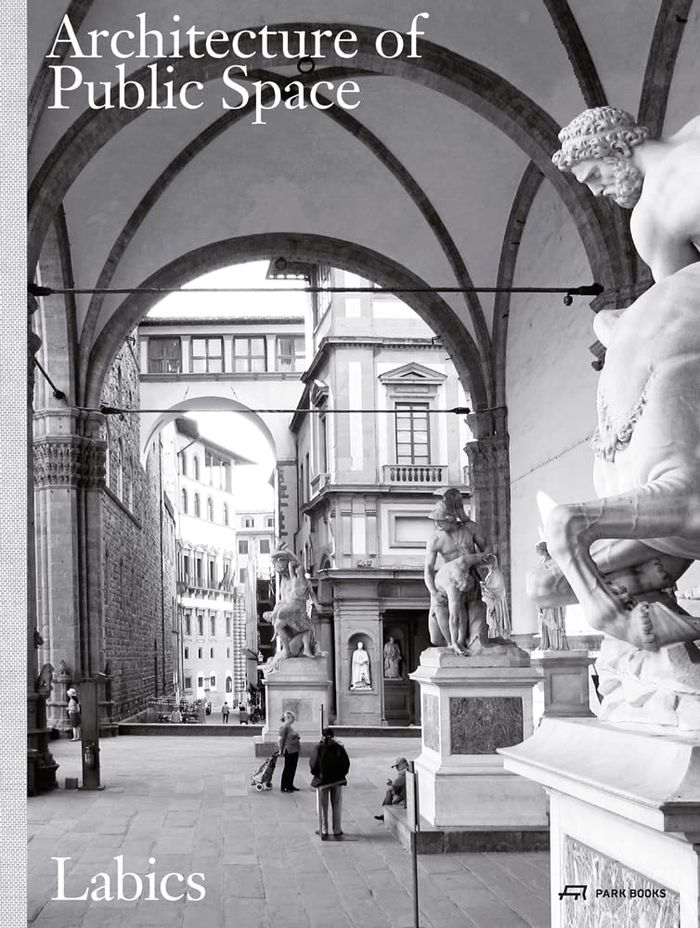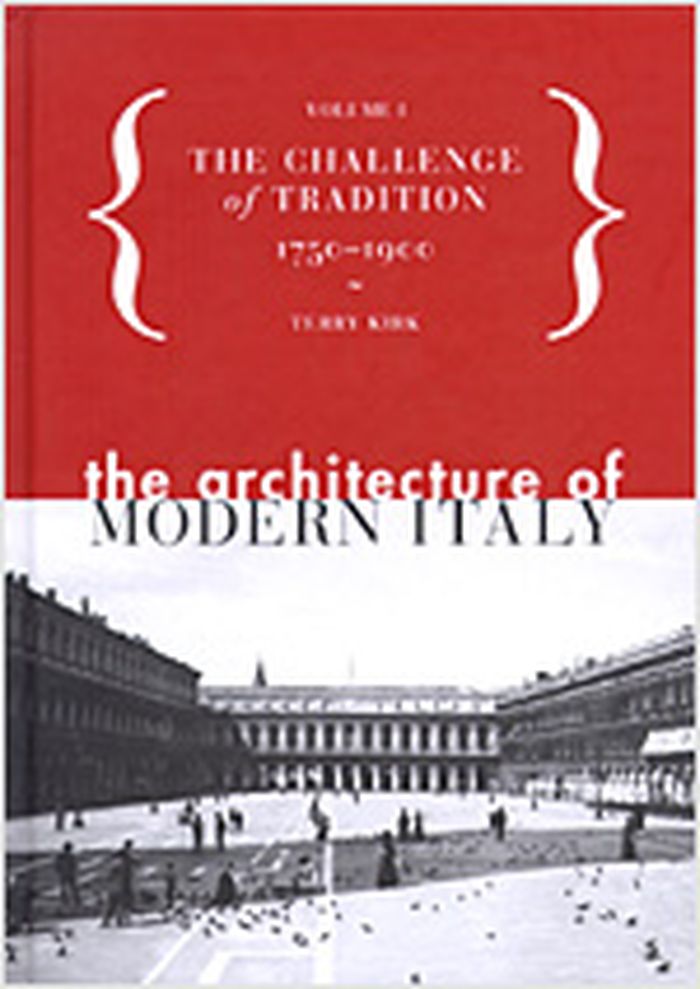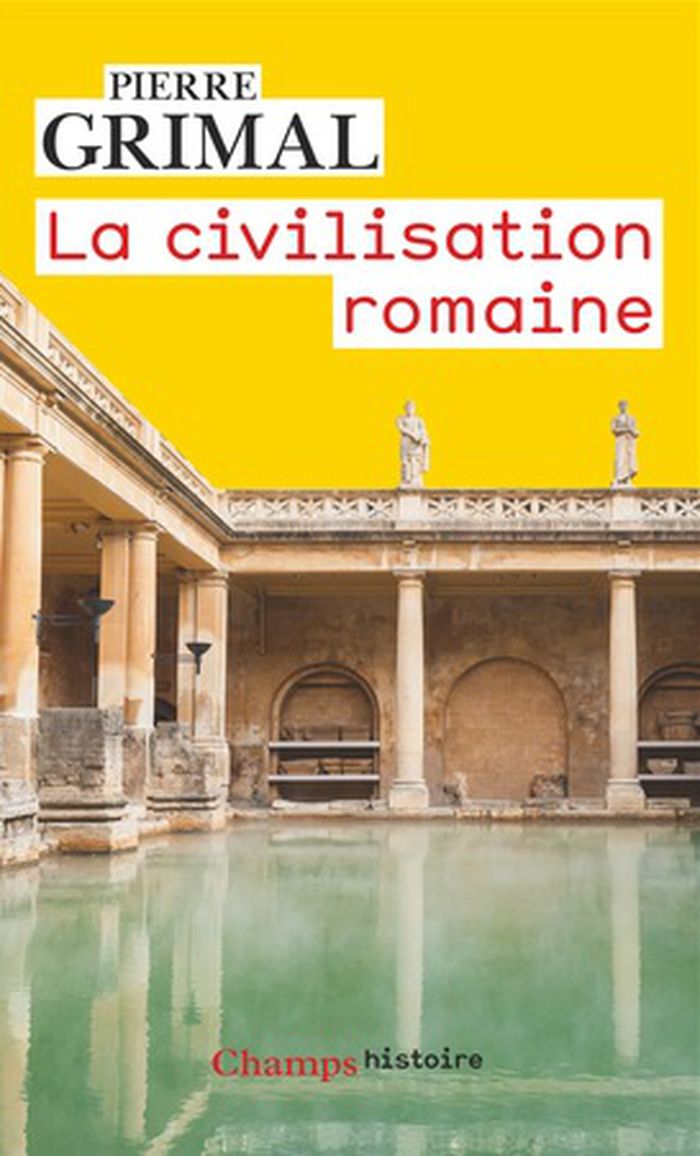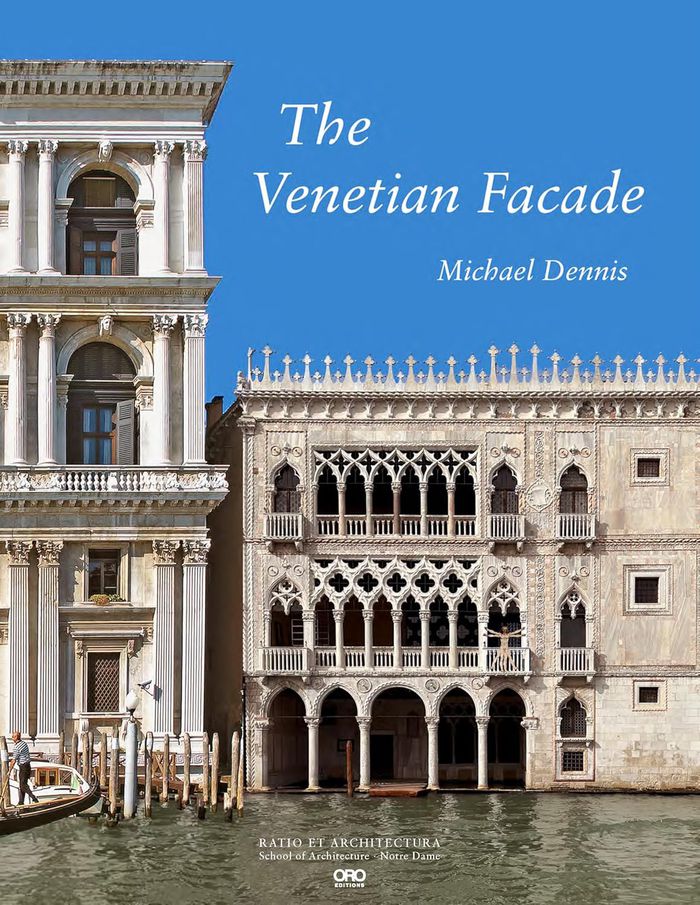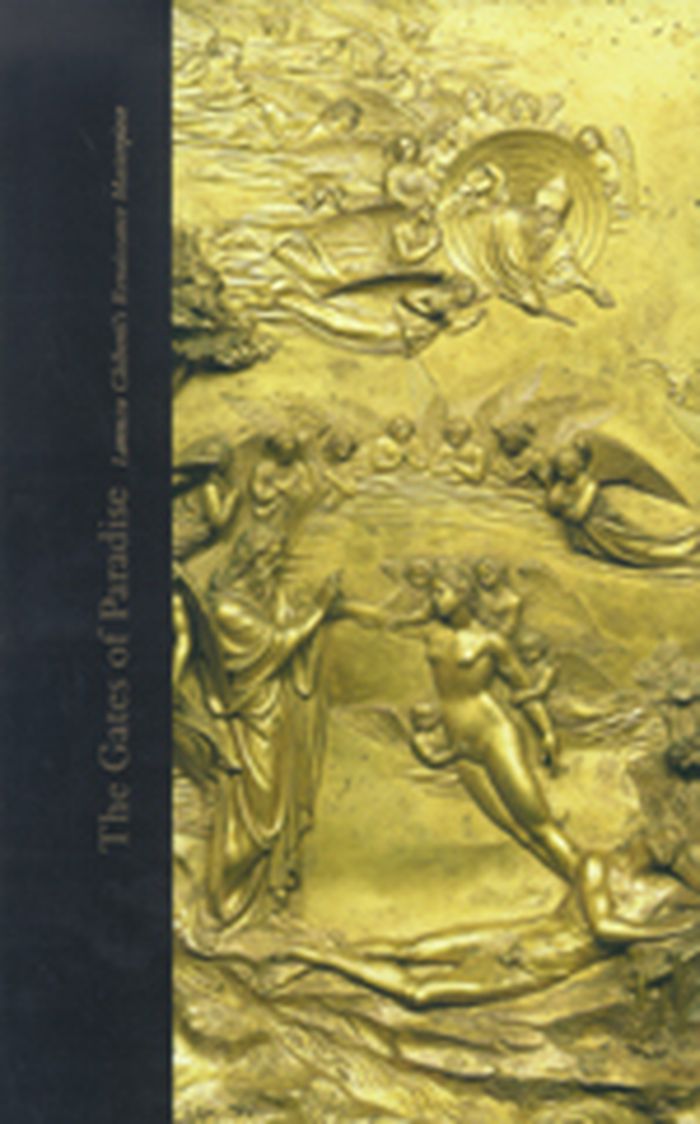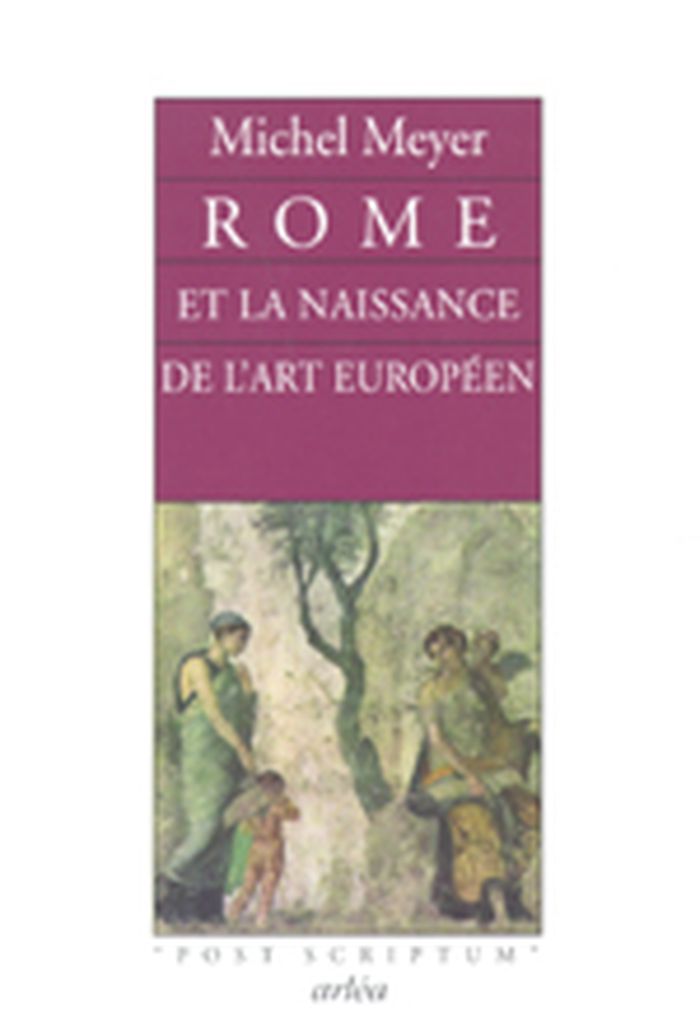Rome from the ground up
$37.50
(available to order)
Summary:
Rome is not one city but many, each with its own history unfolding from a different center: now the trading port on the Tiber; now the Forum of antiquity; the Palatine of imperial power; the Lateran Church of Christian ascendancy; the Vatican; the Quirinal palace. Beginning with the very shaping of the ground on which Rome first rose, this book conjures all these cities,(...)
Rome from the ground up
Actions:
Price:
$37.50
(available to order)
Summary:
Rome is not one city but many, each with its own history unfolding from a different center: now the trading port on the Tiber; now the Forum of antiquity; the Palatine of imperial power; the Lateran Church of Christian ascendancy; the Vatican; the Quirinal palace. Beginning with the very shaping of the ground on which Rome first rose, this book conjures all these cities, past and present, conducting the reader through time and space to the complex and shifting realities - architectural, historical, political, and social - that constitute Rome.
History until 1900, Italy
$95.00
(available in store)
Summary:
This new book by Labics, one of Italy’s leading architectural firms, is devoted to the country’s architecture of public space. Squares, galleries, loggias, porticoes, and courtyards are the elements that characterize Italy’s historic towns and cities—and that make the experience of these public spaces intense and attractive. Labics sets out to explore these enchanting(...)
October 2023
The architecture of public space
Actions:
Price:
$95.00
(available in store)
Summary:
This new book by Labics, one of Italy’s leading architectural firms, is devoted to the country’s architecture of public space. Squares, galleries, loggias, porticoes, and courtyards are the elements that characterize Italy’s historic towns and cities—and that make the experience of these public spaces intense and attractive. Labics sets out to explore these enchanting spaces, to analyze their history and typologies, and to document and describe them through newly produced photographs, plans, and diagrams. They offer a taxonomy of solutions that, as a whole, forms a timeless theory for the design of public spaces. ''The architecture of public ppace'' forms a captivating collection of image material that visually decodes the characteristic core elements of Italian architecture and specifies their role in the definition of public space. The volume highlights the architectural solutions from the thirteenth to the twentieth centuries that produce the particular spatial quality of these urban structures and sets out how they were originally established for and are continuing to be used by the people.
books
Venice and the East
$96.00
(available to order)
Summary:
This lively and richly illustrated book investigates the influence of oriental trade and travel on medieval Venice and its architecture. Architectural historian Deborah Howard examines the experiences of Venetian merchants overseas, focusing on links (...)
October 2000, New Haven
Venice and the East
Actions:
Price:
$96.00
(available to order)
Summary:
This lively and richly illustrated book investigates the influence of oriental trade and travel on medieval Venice and its architecture. Architectural historian Deborah Howard examines the experiences of Venetian merchants overseas, focusing on links with Egypt, Syria, and Palestine, as well as with Persia and the Silk Route. She argues that many Venetians gained insight into Islamic culture through personal contacts with their Muslim trading partners. Based on wide-ranging multidisciplinary research, this book examines the mechanisms that governed the exchange of visual culture across ideological boundaries before the age of printing. Howard explores a range of building types that reflect the impact of Islamic imagery, paying special attention to two icon buildings, San Marco and the Palazzo Ducale. She considers the complexities of importing Muslim ideas to an unambiguously Christian city, itself the point of embarkation for pilgrims to the Holy Land.
books
October 2000, New Haven
$40.95
(available in store)
Summary:
Volume 1 : the challenge of tradition, 1750-1900 explores the dynamic balancing the forces demanded by a reverence for Italy's unparalleled architectural patrimony and a desire for new means of expression and technological innovation. From the neoclassical fantasies of Giovanni Battista Piranesi to the spectaculor steel-and-glass galleries of Milan, 'The challenge of(...)
The architecture of modern Italy volume I: the challenge of tradition, 1750-1900
Actions:
Price:
$40.95
(available in store)
Summary:
Volume 1 : the challenge of tradition, 1750-1900 explores the dynamic balancing the forces demanded by a reverence for Italy's unparalleled architectural patrimony and a desire for new means of expression and technological innovation. From the neoclassical fantasies of Giovanni Battista Piranesi to the spectaculor steel-and-glass galleries of Milan, 'The challenge of tradition' reveals an underappreciated history of richness and complexity.
History until 1900, Italy
La civilisation romaine
$19.95
(available in store)
Summary:
La civilisation romaine . Rome. C'est une ville, un empire, une civilisation. Mais une ville où les habitants aspirent à la ruralité, un empire créé par la République, une civilisation dont la domination repose sur la participation des vaincus. Rome est le nom de cette création continue de contradictions qui, douze siècles durant, sans révérer ni renier le passé, s'est(...)
La civilisation romaine
Actions:
Price:
$19.95
(available in store)
Summary:
La civilisation romaine . Rome. C'est une ville, un empire, une civilisation. Mais une ville où les habitants aspirent à la ruralité, un empire créé par la République, une civilisation dont la domination repose sur la participation des vaincus. Rome est le nom de cette création continue de contradictions qui, douze siècles durant, sans révérer ni renier le passé, s'est nourrie des crises qui l'ont agitée et où l'homme a trouvé les moyens de vivre sa liberté. Rome a fait une ville de ce qui jusque-là était le monde et rien du monde qui nous entoure aujourd'hui n'eût été ce qu'il est si Rome n'avait existé. Ensemble complexe de coutumes, de techniques, de règles sociales formulées et informulées, de goûts, de styles de vie, et de manières de s'insérer dans le monde, les problèmes romains ne sont jamais très loin de ceux de notre temps. Dans cet ouvrage de référence, Pierre Grimai nous invite à redécouvrir l'émergence et la chute d'une culture sans précédent que nous ne saurions oublier sans mutiler une part de nous-mêmes.
History until 1900, Italy
The Venetian facade
$56.00
(available in store)
Summary:
This book is about architecture. It is not about history, although a bit of history is necessary to set the context. It is not about theory, although, again, a bit is necessary to connect the facade with urbanism. It is also not about structure and technology. And, most definitely, it is not about the plan. All of these topics are well-covered elsewhere. This book is(...)
The Venetian facade
Actions:
Price:
$56.00
(available in store)
Summary:
This book is about architecture. It is not about history, although a bit of history is necessary to set the context. It is not about theory, although, again, a bit is necessary to connect the facade with urbanism. It is also not about structure and technology. And, most definitely, it is not about the plan. All of these topics are well-covered elsewhere. This book is about the facade. It explores the art and typology of the Venetian facade, not only as a high point of architectural literacy and achievement, but as a potentially useful contemporary stimulant.
History until 1900, Italy
$49.95
(available to order)
Summary:
In 1452, Florentine sculptor Lorenzo Ghiberti unveiled a masterpiece that had been a quarter-century in the making: ten bronze panels depicting intricate scenes from the Old Testament. The monumental gilded bronze doors (each more than 15 feet tall) were designed for the Baptistery in the Piazza del Duomo in Florence. Centuries of admirers have considered “The Gates of(...)
The gates of paradise : Lorenzo Ghiberti's masterpiece
Actions:
Price:
$49.95
(available to order)
Summary:
In 1452, Florentine sculptor Lorenzo Ghiberti unveiled a masterpiece that had been a quarter-century in the making: ten bronze panels depicting intricate scenes from the Old Testament. The monumental gilded bronze doors (each more than 15 feet tall) were designed for the Baptistery in the Piazza del Duomo in Florence. Centuries of admirers have considered “The Gates of Paradise” one of the great masterworks of Western art. This extensively illustrated book displays the full glory and elaborate details of many of the newly restored bronze panels, the extraordinary work of the conservators and restorers who cleaned the priceless doors. In a series of fascinating chapters, expert contributors capture Ghiberti’s world, his remarkable talent at representing human emotion in rich illusionistic settings, the relationships between Renaissance patrons and artists, and the collaborations and rivalries among artists. Other chapters explore the challenging craft of bronze sculpture, Ghiberti’s casting and finishing techniques, and the painstaking process involved in documenting and restoring the treasured doors. A chronology of Ghiberti’s life completes this lavishly produced volume.
History until 1900, Italy
$41.95
(available in store)
Summary:
L'Europe actuelle est héritière de la Rome antique, cette mosaïque de nations unies par une même culture dans un territoire aussi vaste qu'il ne l'est aujourd'hui. La littérature, l'architecture, la peinture et la sculpture y ont été un langage commun, de l'Espagne à la Turquie, en passant par l'Afrique du Nord. Forum, aqueduc, amphithéâtre, villa romaine, où qu'ils se(...)
Rome et la naissance de l'art européen
Actions:
Price:
$41.95
(available in store)
Summary:
L'Europe actuelle est héritière de la Rome antique, cette mosaïque de nations unies par une même culture dans un territoire aussi vaste qu'il ne l'est aujourd'hui. La littérature, l'architecture, la peinture et la sculpture y ont été un langage commun, de l'Espagne à la Turquie, en passant par l'Afrique du Nord. Forum, aqueduc, amphithéâtre, villa romaine, où qu'ils se trouvent, traduisent cette cohérence et cette unité. Michel Meyer nous offre ici une synthèse sur l'art romain, la première en français depuis de nombreuses décennies. En apportant les preuves de sa grande originalité, il nous en propose une lecture philosophique, historique, esthétique, sociologique et politique, et nous aide à découvrir cette civilisation qui est l'ancêtre de la nôtre.
History until 1900, Italy
St. Peter's
$22.95
(available to order)
Summary:
Built by the decree of Constantine, rebuilt by some of the most distinguished architects in Renaissance Italy, emulated by Hitler's architect in his vision for Germania, immortalized on film by Fellini, and fictionalized by a modern American bestseller, St. Peter's is the most easily recognizable church in the world. This book is a cultural history of one of the most(...)
St. Peter's
Actions:
Price:
$22.95
(available to order)
Summary:
Built by the decree of Constantine, rebuilt by some of the most distinguished architects in Renaissance Italy, emulated by Hitler's architect in his vision for Germania, immortalized on film by Fellini, and fictionalized by a modern American bestseller, St. Peter's is the most easily recognizable church in the world. This book is a cultural history of one of the most significant structures in the West. It bears the imprint of Bramante, Raphael, Michelangelo, Bernini, and Canova. For Grand Tourists of the eighteenth century, St. Peter's exemplified the sublime. It continues to fascinate visitors today and appears globally as a familiar symbol of the papacy and of the Catholic Church itself. The church was first built in the fourth century on what is thought to be the tomb of Peter - the rock upon which Christ decreed his church shall be built. After twelve hundred years, the church was largely demolished and rebuilt in the sixteenth century when it came to acquire its present-day form. St. Peter's awes the visitor by its gigantic proportions, creating a city within itself. It is the mother church, the womb from which churches around the world have taken inspiration. This book covers the social, political, and architectural history of the church from the fourth century to the present. From the threshold, to the subterranean Roman necropolis, to the dizzying heights of the dome, this book provides rare perspectives and contexts for understanding the shape and significance of the most illustrious church in the world.
History until 1900, Italy
books
$49.50
(available to order)
Summary:
Les sept civitates de Lyonnaise occidentale qui font l'objet de cet ouvrage (Osismes, Coriosolites, Vénètes, Riédons, Namnètes, Aulerques Diablintes et Andécaves) ne conservent que bien peu de souvenirs monumentaux de l'époque romaine. N'étaient les vestiges suggestifs et remarquablement mis en valeur de Jublains (Mayenne), les ruines de l'amphithéâtre et du «nymphée» de(...)
L'architecture romaine dans l'ouest de la Gaule
Actions:
Price:
$49.50
(available to order)
Summary:
Les sept civitates de Lyonnaise occidentale qui font l'objet de cet ouvrage (Osismes, Coriosolites, Vénètes, Riédons, Namnètes, Aulerques Diablintes et Andécaves) ne conservent que bien peu de souvenirs monumentaux de l'époque romaine. N'étaient les vestiges suggestifs et remarquablement mis en valeur de Jublains (Mayenne), les ruines de l'amphithéâtre et du «nymphée» de Gennes (Maine-et-Loire) et le sanctuaire du Haut-Bécherel, à Corseul (Côtes-d'Armor), le bilan se réduirait à quelques lambeaux d'enceintes urbaines, aux traces très arasées de quelques villae et à de maigres tronçons d'aqueducs. Encadrés par les puissantes architectures néolithiques et d'innombrables réalisations des périodes médiévale et moderne, les monuments de l'époque impériale ont longtemps eu quelque peine à satisfaire la curiosité du touriste et à susciter celle du savant. On comprend dès lors aisément que la région n'occupe qu'une place très modeste dans les synthèses, même les mieux informées, quand elle n'en est pas tout simplement absente. Cette rareté des vestiges monumentaux a ancré dans bien des esprits l'idée que ces confins occidentaux des Gaules étaient largement restés à l'écart du mouvement de romanisation, et que, pour des raisons variées - manque d'intérêt de la part du conquérant, inertie, voire défiance du provincial -, elle n'est pas devenue aussi profondément romaine que les autres secteurs de la Gaule. Les fouilles et prospections de ces dernières décennies, l'étude d'une documentation épigraphique peu abondante mais non dépourvue d'intérêt et l'inventaire des blocs d'architecture corrigent largement cette image. Si les cités de l'ouest de la Gaule n'ont jamais cédé au gigantisme, si la monumentalisation y est avant tout réservée aux villes chefs-lieux et si certains édifices font apparemment défaut aux panoplies monumentales, l'intégration à l'Empire et l'adhésion des élites aux pratiques et valeurs de la romanité trouvent, ici comme ailleurs, une traduction concrète dans l'architecture publique et privée, urbaine et rurale. C'est ce qu'entend démontrer le présent ouvrage. Il dresse d'abord un état des connaissances sur plusieurs types d'édifices, pour lesquels les données disponibles autorisent désormais l'établissement d'un bilan: les forums, les édifices religieux, les domus, les villae et les tombes monumentales. Ces études sont complétées par deux enquêtes thématiques, consacrées l'une au décor architectonique, documentation jusqu'alors pratiquement inexploitée, l'autre au financement de la parure monumentale. L'ouvrage s'achève par une tentative de bilan sur l'activité édilitaire des sept cités concernées entre la fin du Ier s. avant notre ère et la fin du IVe siècle.
books
January 2007, Rennes
History until 1900, Italy
